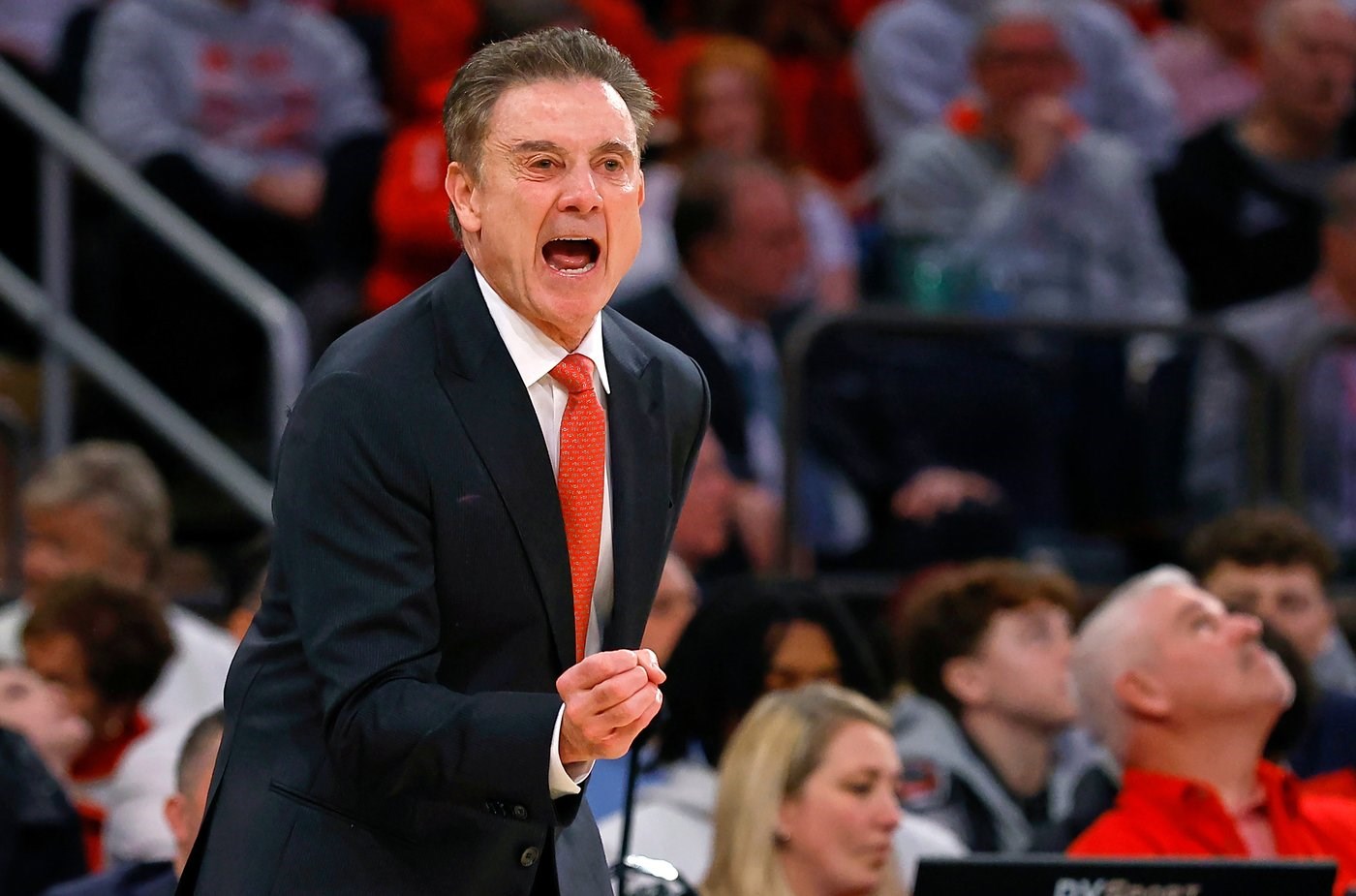
FILE - St. John's head coach Rick Pitino reacts during the first half of an NCAA college basketball game against Creighton, Feb. 16, 2025, in New York. (AP Photo/Noah K. Murray, File)
November 02, 2025 - 9:10 PM
Imagine an NBA where teams in the Eastern Conference have a salary cap twice as big as those in the West. In college basketball, it’s sort of like that with the added fact that, ultimately, nobody really knows what everyone else is spending.
With schools now allowed to shell out $20.5 million to their players this year, most are doling out the lion’s share to football players and giving whatever’s left to the hoops stars.
Some schools – think St. John’s, Gonzaga and Wichita State – don’t have to worry about football, which could expand their possibilities. Adding uncertainty to the arrangement is how the role of payments above and beyond the $20.5 million that come from third parties impact the competitive and financial balance.
The 2025-26 hoops season is the first where we find out how big an impact these tilted salary caps might have on the hardwood. As the completely unpredictable football season has shown — who foresaw Indiana, Georgia Tech and Vanderbilt in the top 10 in late October? — anyone who thinks they have the answer to a still-evolving question involving name, image, likeness payments in hoops before the first ball is tipped is fooling themselves.
“The short answer is, it remains to be seen who are going to be the winners and who are going to be the losers in this system,” said Val Ackerman, the commissioner of the Big East, where only UConn plays football.
The number $20.5 million vs. the ‘real’ salary cap
At some schools where some, or most, of the $20.5 million must be parceled out to football, the concern over basketball teams getting less of that pie doesn't feel all that palpable. The main reason is because nobody really believes the $20.5 million is the real salary cap.
Under terms of the House settlement, schools are allowed to share up to that amount with their players. But it did not do away with the option to provide third-party deals outside the school-to-player payments.
Those deals are subject to scrutiny from the newly created College Sports Commission, though there is still uncertainty over what kind of deals it will approve. And though the CSC promised to add a level of transparency to the entire business of paying players, so far, most schools are operating in the dark.
“They deserve to be paid,” Villanova coach Kevin Willard said. “Do we have the right system? No. We don’t have any system. And that’s why you have fans who embrace it and fans who hate it.”
Early on, the CSC tried to take a more restrictive approach to those deals — putting out guidance that third-party deals would not be approved if those parties were set up solely as a way to pay players. After the conferences challenged that, the CSC rewrote the guidance to set a more liberal standard.
“To understand what we need to do, yeah, understand the Big East, they have that advantage,” said Duke coach Jon Scheyer. “Understand other schools, other conferences can make more money and all that. But I don’t spin my wheels on that too much, to be honest, because I think it’s a little bit of a waste of time.”
Best hoops deals still go to players at schools with football
This season, rosters are also stacked with players whose deals were finalized before the House settlement, which meant the $20.5 million salary cap didn't apply, and neither did the CSC's oversight of the third-party deals.
Some of the more massive deals have gone to BYU recruit AJ Dybantsa, whose reported NIL haul of $5 million to $7 million with the school's collective is less than the reported $10 million he's receiving from the sports-merchandise company Fanatics.
Texas Tech's JT Toppin received a reported $4 million NIL deal to stay with the Red Raiders after his successful sophomore season.
The website 247 Sports put out a list of the 10 teams believed to be spending $10 million or more on their basketball rosters. Only one, St. John's, came from a school that didn't have football.
Pitino gets the best of both worlds at St. John's
Hall of Fame coach in Rick Pitino recruited what 247 Sports called the top-ranked transfer-portal class of 2025. It included Ian Jackson (North Carolina) and Dillon Mitchell (Cincinnati), who were both top-10 prospects coming out of high school.
Jackson, according to reports, already had NIL deals signed before he stepped foot in college. Assuming those are still going, Pitino had two options — offer him from out of St. John's $20.5 million bankroll and push him to other deals through collectives that are heavily bankrolled by deep-pocketed alum Mike Repole.
“I let (St. John’s) know that, listen, you guys would have my cooperation to do whatever it takes to help the university get back in the national spotlight,” Repole told Front Office Sports shortly after Pitino was hired.
The CSC's first dive into third-party deals to see what's allowable and what isn't will play a big role into whether the St. John's advantage comes from not having to divvy up as much of the $20.5 million, or from Repole's money, or both.
For a program with such a big booster, it's a double-edged sword. For others in the Big East, maybe not so much.
“If we have an advantage, it's going to depend on whether third-party scrutiny holds up,” Ackerman said. “If deals that are clearly against the rules are allowed to go through, then a football school can just make up for whatever basketball shortfall exists under the $20.5 million. They'll go out and get it.”
___
AP Sports Writers Aaron Beard, Dan Gelston and Doug Feinberg contributed.
News from © The Associated Press, 2025